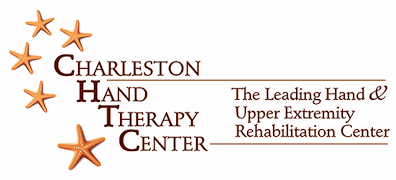Do I need a Physician’s referral?
Charleston Hand Therapy Center and state law does not require that you receive a referral from your Physician before scheduling an appointment with our office and receiving treatment. However, in order to bill insurance companies and to receive payment for services, a physician order is required. You may request that your Physician refer you to Charleston Hand Therapy Center for your rehabilitation needs.
What are Orthoses, Casts and Braces?
Orthoses (commonly known as splints) are often custom fabricated by the Hand Therapist to rest, protect or mobilize an injury segment. For example, following a wrist fracture, an orthosis may be custom fabricated to immobilize the wrist and protect the healing fracture. The advantage of an orthosis compared to a cast, is that it can be removed for bathing. Custom orthoses are also fabricated to increase range of motion (ROM) following an injury resulting in joint stiffness. Custom orthoses are commonly fabricated from a low-temperture plastic. A few Pre-fabricated or non-custom orthoses are used during treatment to immobilize a joint or to mobilized or increase ROM in a joint. Billing codes L-codes are used to distinguish between custom and pre-fabricated orthoses to the insurance companies.
Casts are utilized to immobilize a fracture, or correct a joint contracture. The Hand Therapist uses a series of plaster casts as a treatment to correct contractures. The Physician uses a cast to immobilize a broken bone, for example a wrist fracture. This immobilization cast may be constructed from plaster or fiberglass.
Brace is a term not often used by Hand Therapist. Sometimes people will refer to their splints as braces. Braces tend to be heavy duty and more commonly used to describe neck, back or leg supports.
What is a Hand Therapist?
A Hand Therapist is an occupational or Physical Therapist who specializes in the treatment of patients with shoulder, elbow, wrist or hand injuries. These may include fractures, nerve injuries, soft tissue injuries, burns, tendonitis, sprains/strains, tendon lacerations, arthritis and infections. A hand therapy program usually involves an initial evaluation of range-of-motion (ROM), strength, soft tissue, sensation, coordination, skin integrity, pain and swelling of the affected part of the arm/hand. A treatment program is then developed to maximize recovery and enable the patient to return to work, social activities, sports and other pre-injury activities.
A Certified Hand Therapist (CHT) is a registered and state licensed Occupational or Physical Therapist who has demonstrated exceptional clinical skills and have passed a national specialty exam in the treatment of upper extremity pathology resulting from trauma, disease, congenital deformity, or an acquired deformity. With the ever-increasing complexities of injuries and the continued advancement of new surgical procedures, the treating therapist is required to have greater experience and specific knowledge base to treat the patient effectively
Therapists taking the CHT exam are required to have 4,000 hours of hand therapy and 5 years of hand-on treatment experience. Once the therapist has passed the exam, they are a certified hand Therapist and add CHT after their name and licensure initials (OT/L or LPT). While many Occupational and Physical Therapists may treat hand/upper extremity injuries, Certified Hand Therapists have demonstrated through evidenced based research to have achieve better rehabilitation results since they have demonstrated competency as “specialists.”
